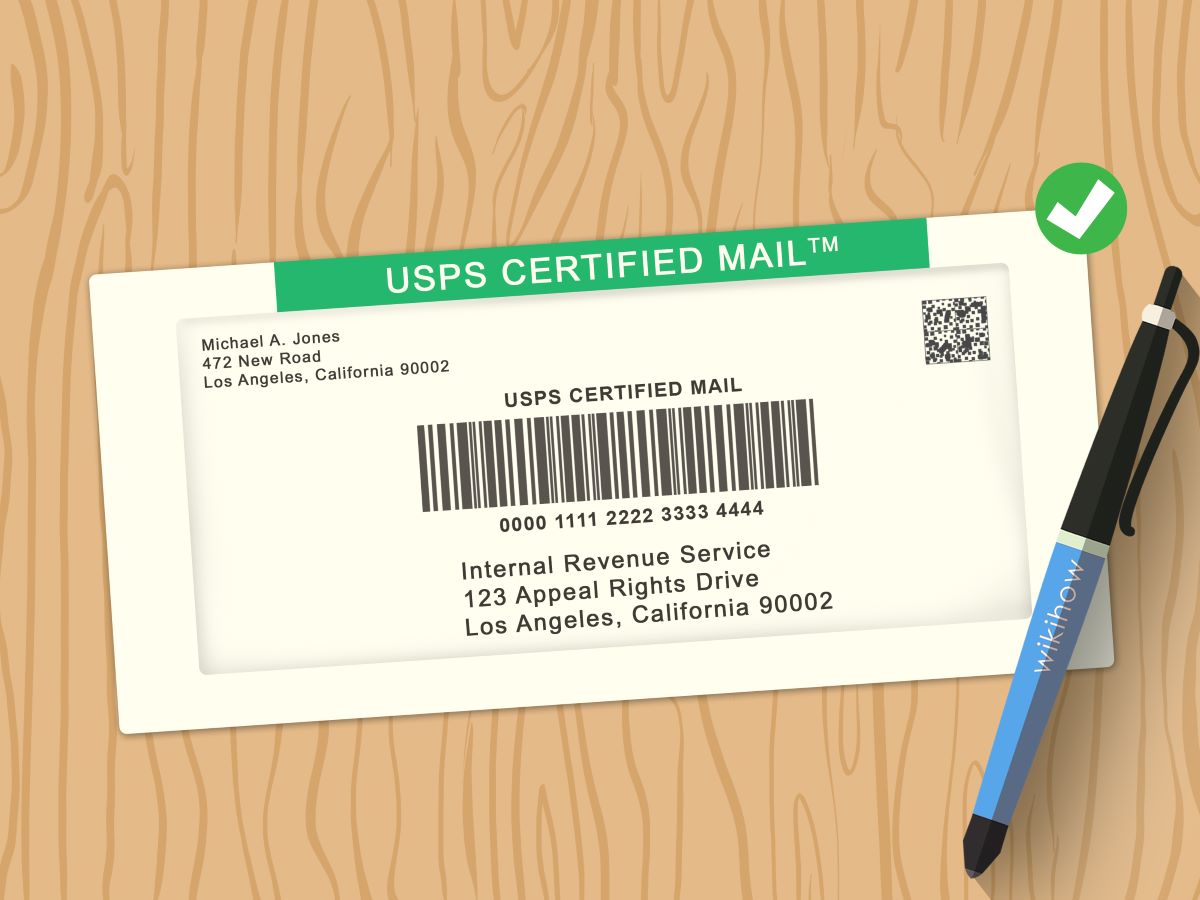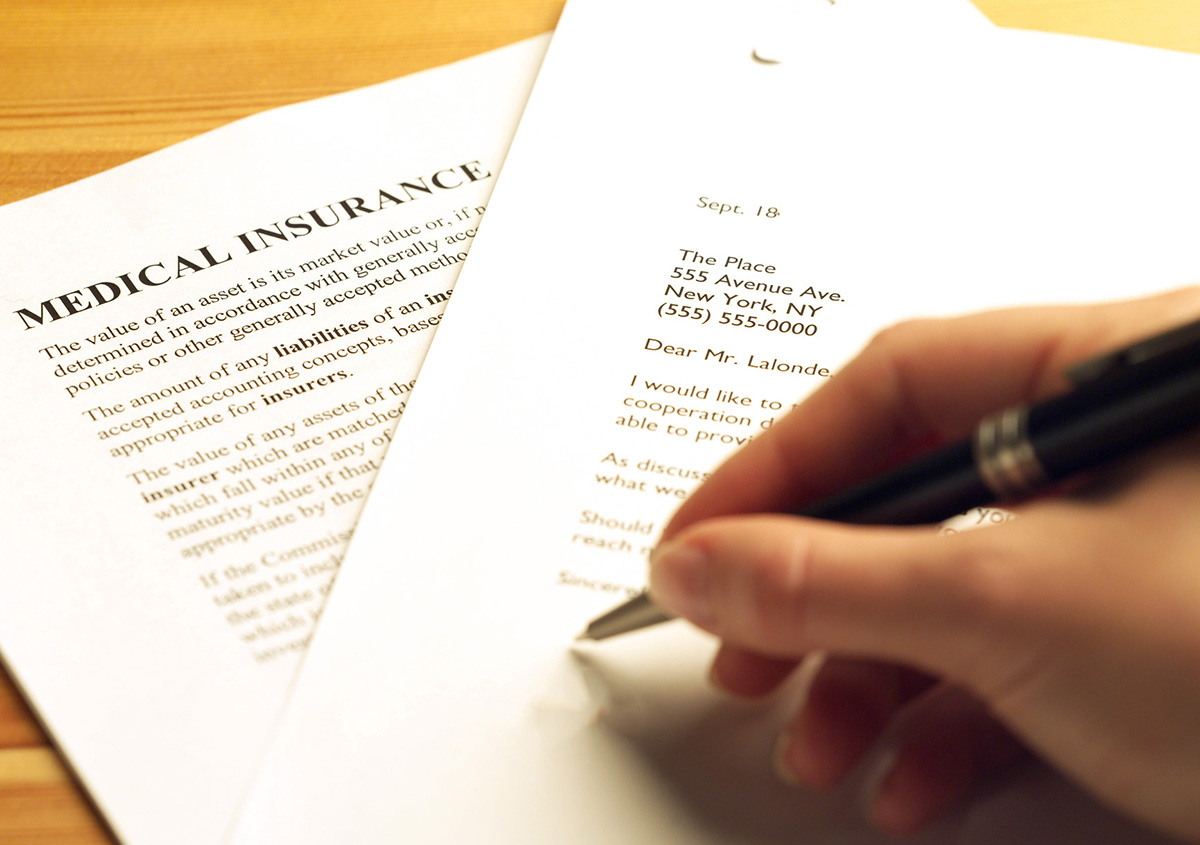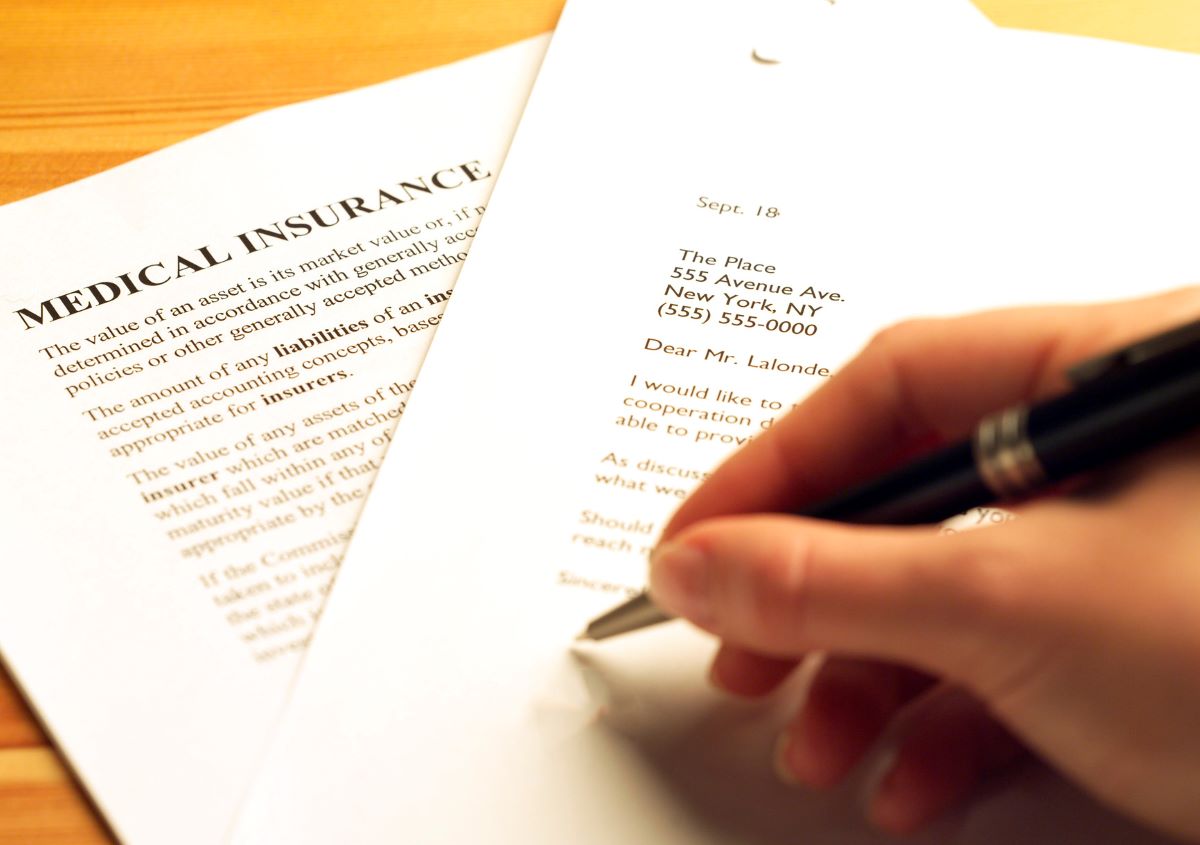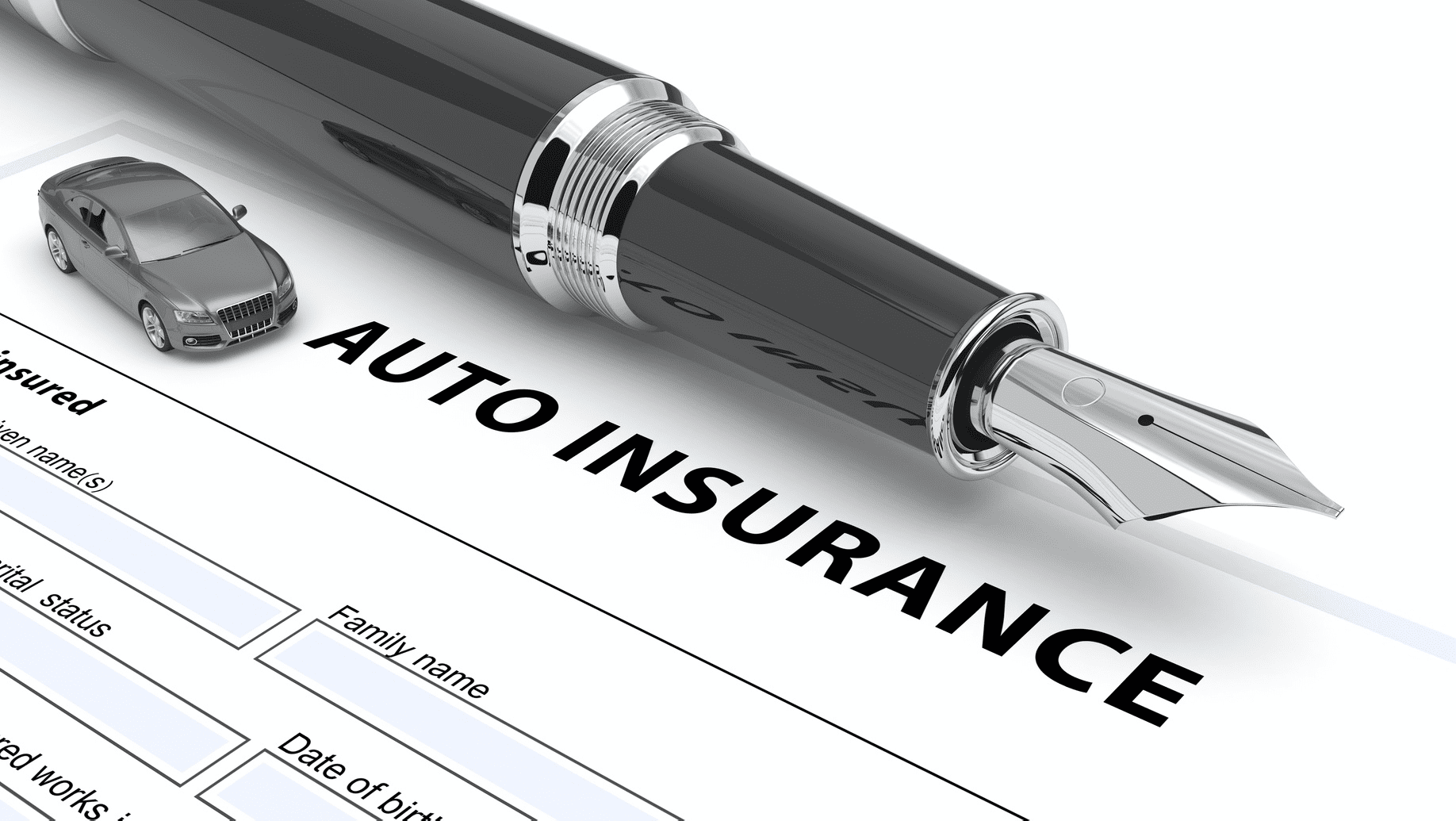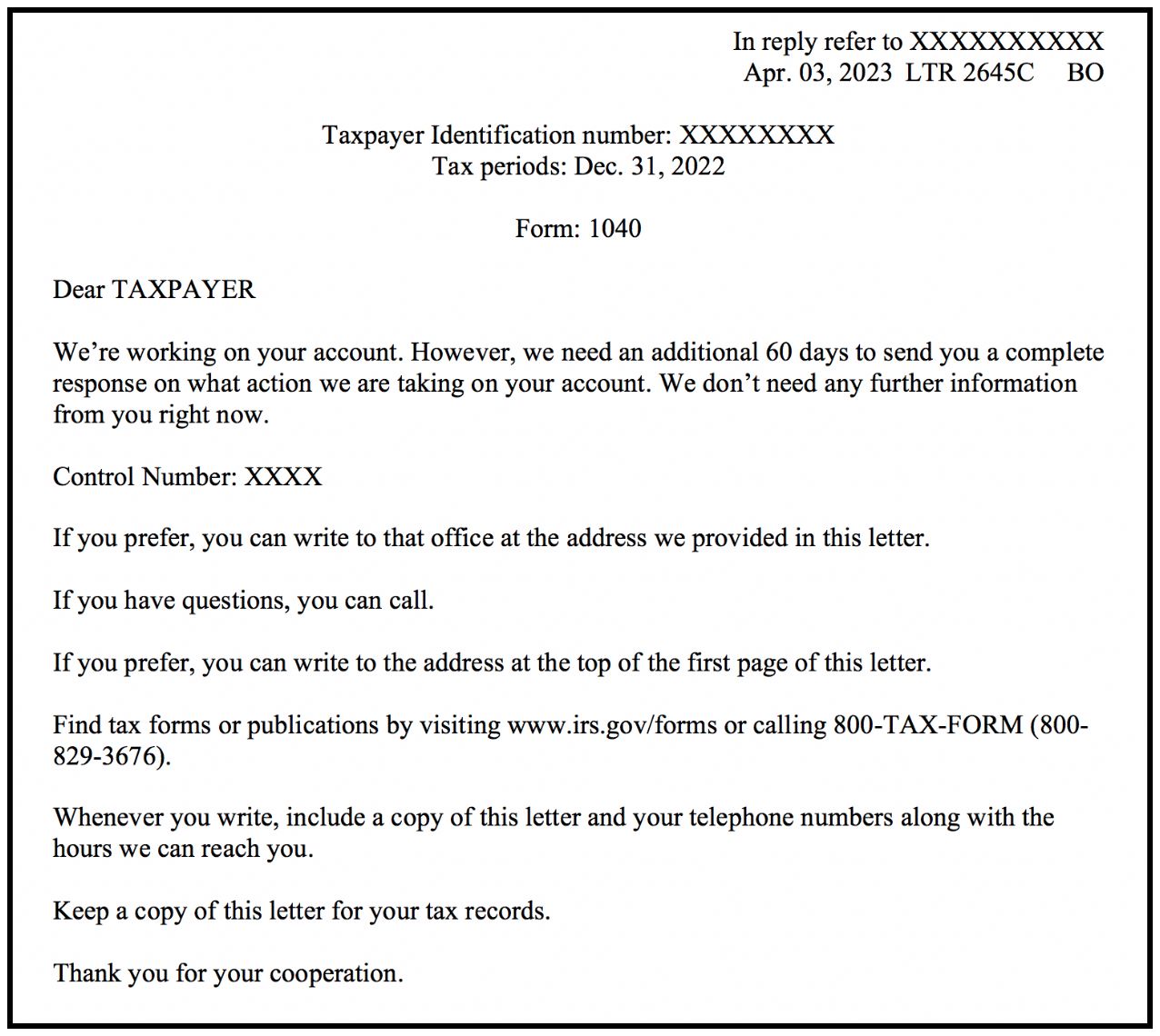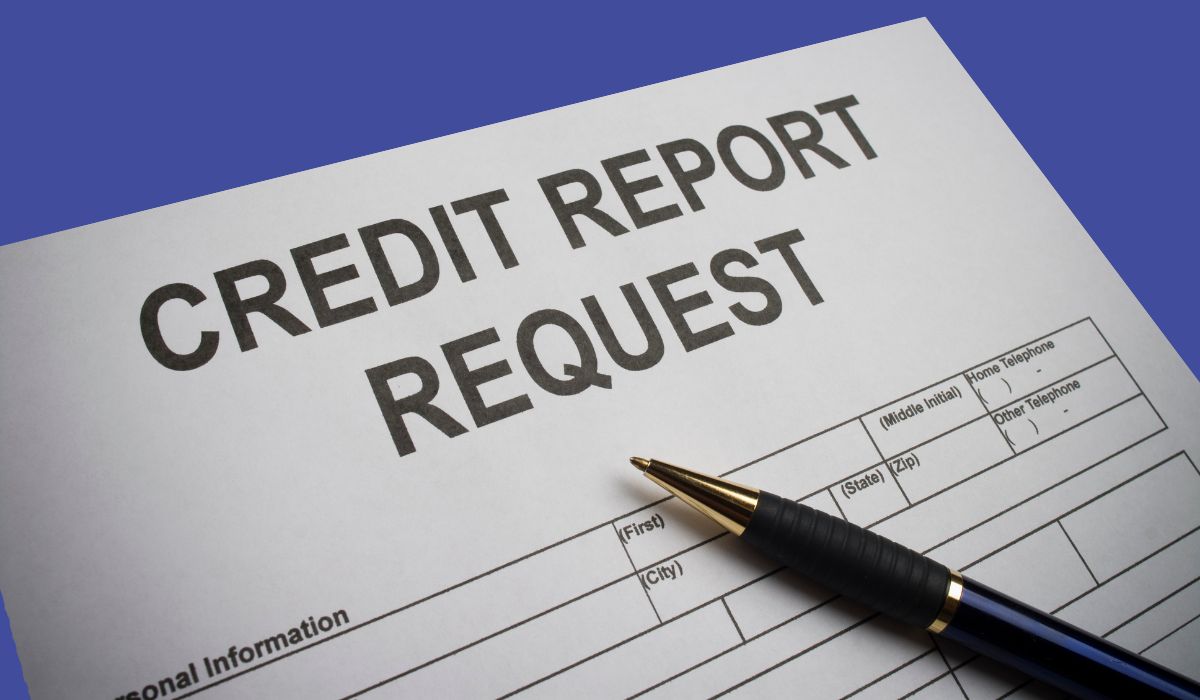Home>Finance>How To Write A Demand Letter To An Insurance Company


Finance
How To Write A Demand Letter To An Insurance Company
Published: November 8, 2023
Learn how to write a compelling demand letter to an insurance company and ensure your financial needs are met. Enhance your understanding of finance and maximize your chances of success.
(Many of the links in this article redirect to a specific reviewed product. Your purchase of these products through affiliate links helps to generate commission for LiveWell, at no extra cost. Learn more)
Table of Contents
- Introduction
- Step 1: Gather Information
- Step 2: Format the Letter
- Step 3: Include the Date and Contact Information
- Step 4: State the Purpose of your Letter
- Step 5: Provide a Detailed Account of the Incident
- Step 6: Include Supporting Documentation
- Step 7: Specify the Demands
- Step 8: Set a Deadline for Response
- Step 9: Proofread and Edit
- Step 10: Send the Demand Letter
Introduction
When you find yourself in a situation where you need to demand compensation from an insurance company, it is important to approach the matter with a clear and professional tone. Writing a demand letter to an insurance company is a crucial step in the claims process as it outlines your grievances and requests adequate compensation for your losses.
This article will guide you through the steps of writing a demand letter to an insurance company effectively. By following these steps, you can maximize the chances of a successful resolution to your claim.
It is important to note that a demand letter is typically sent after you have already attempted to resolve the issue through other means, such as contacting the insurance company directly or filing a claim. This letter serves as a formal communication stating your position and outlining your demands for compensation.
Writing a demand letter can be intimidating, but with the right approach and attention to detail, you can communicate your needs clearly and assertively. By following the steps outlined in this article, you will be well on your way to crafting a persuasive demand letter that increases your chances of receiving the compensation you deserve.
Before diving into the steps, it is important to gather all the necessary information and documentation related to your claim. This includes incident reports, medical records, photographs, and any other evidence that supports your case. Having a solid foundation of information will not only strengthen your demand, but it will also demonstrate to the insurance company that you have done your due diligence.
Now that you understand the importance of a demand letter and have gathered all the necessary information, let’s proceed to the first step: gathering information.
Step 1: Gather Information
Before you start writing your demand letter, it is crucial to gather all the necessary information and evidence related to your claim. This includes any documents, reports, photographs, or other supporting materials that will help strengthen your case. The more information you have, the better prepared you will be to make a persuasive argument for compensation.
Here are some key pieces of information you should gather:
- Incident Details: Collect all relevant details about the incident that led to your claim. This includes the date, time, and location of the incident, as well as a detailed description of what occurred.
- Witness Information: If there were any witnesses to the incident, gather their contact information. Witness statements can provide additional support to your claim.
- Medical Records: If you sustained any injuries as a result of the incident, retrieve your medical records, including diagnoses, treatments, and prescriptions. These records will help substantiate your claim for medical expenses.
- Police Reports: If law enforcement was called to the scene of the incident, obtain a copy of the police report. This report will provide an official account of the incident and can serve as crucial evidence.
- Photographs and Videos: If applicable, gather any photographs or videos that capture the scene of the incident, property damage, or any visible injuries you sustained. Visual evidence can be compelling and help support your claim.
- Insurance Policies and Correspondence: Retrieve copies of your insurance policy documents and any relevant correspondence with the insurance company. This will give you a clear understanding of the coverage and help you communicate your rights and requests effectively.
By ensuring you have all the necessary information and evidence at your disposal, you will be able to present a strong and well-supported demand to the insurance company. This will enhance your credibility and increase the likelihood of a favorable outcome for your claim.
Once you have gathered all the necessary information, you are ready to move on to the next step: formatting the demand letter.
Step 2: Format the Letter
The format of your demand letter plays a crucial role in effectively communicating your demands to the insurance company. A well-structured and organized letter will enhance clarity and make it easier for the recipient to understand your position. Here are some key guidelines to follow when formatting your demand letter:
- Use a Professional Tone: Maintain a professional and respectful tone throughout the letter. Avoid using aggressive language or making personal attacks, as this may undermine the credibility of your claim.
- Include Your Personal Information: Begin the letter by stating your full name, address, phone number, and email address. This information will allow the insurance company to easily contact you regarding your claim.
- Include the Insurance Company’s Information: Clearly state the name of the insurance company, along with their address and contact details. This will ensure that your letter reaches the correct recipient within the company.
- Use Clear and Concise Language: Clearly state the purpose of your letter in a concise and straightforward manner. Avoid using technical jargon or complex language that may confuse the reader.
- Use Proper Salutation and Closing: Begin your letter with a professional salutation, such as “Dear Claims Department” or “To Whom It May Concern.” End the letter with a polite closing, such as “Sincerely” or “Thank you for your attention.”
- Use Paragraphs and Bullet Points: Organize your letter into paragraphs and bullet points to make it easier to read and understand. Each paragraph should focus on a specific point, and bullet points can be used to highlight key information or demands.
- Use Clear and Readable Fonts: Use a standard font such as Arial or Times New Roman, and ensure that the font size is easily legible. A font size of 11 or 12 is generally preferred.
- Keep the Letter Concise: While it is important to provide all relevant details, try to keep the letter to one or two pages. Long and rambling letters may dilute the impact of your message.
Following these formatting guidelines will help you create a professional and well-organized demand letter. It will make it easier for the insurance company to understand your position, increasing the likelihood of a favorable response. Now that you have formatted your letter, you are ready to move on to the next step: including the date and contact information.
Step 3: Include the Date and Contact Information
When writing a demand letter to an insurance company, it is important to include the date and your contact information at the beginning of the letter. This information establishes the timeline of your claim and makes it easy for the insurance company to reach out to you regarding your demands.
Here’s how to include the date and contact information in your demand letter:
- Date: Begin the letter by including the date of writing. This is important as it provides a reference point for both you and the insurance company when tracking the progress of your claim.
- Your Information: Below the date, include your personal contact information. This should include your full name, mailing address, phone number, and email address. Providing accurate contact information ensures that the insurance company can easily reach you with any updates or responses to your demand.
- Insurance Company Information: After your contact information, include the details of the insurance company. This should include the company’s name, address, and any other relevant contact information. Double-check that you have the correct mailing address for the claims department or the specific individual responsible for handling your claim.
By including the date and contact information at the beginning of your letter, you establish a professional and organized structure. This enables the insurance company to easily identify your claim and ensures that they can reach out to you promptly if needed.
Now that you have included the date and contact information, you can proceed to the next step: stating the purpose of your letter.
Step 4: State the Purpose of your Letter
Clearly stating the purpose of your demand letter is crucial to ensure that the insurance company understands the reason for your communication. By stating the purpose upfront, you set the tone for the rest of the letter and provide context for the following sections.
Here’s how to effectively state the purpose of your letter:
- Be Direct: Open your letter with a clear and concise statement of the purpose. For example, you can start by saying, “I am writing this letter to demand compensation for the damages sustained in the [incident].” This sets the stage for the reader and clarifies what you expect from the insurance company.
- Include Relevant Claim Details: Briefly summarize the incident or event that led to your claim. Provide enough information to give the insurance company context but avoid going into excessive detail at this stage. Save the detailed account for a later section of the letter.
- Outline the Main Points: Mention the main points that will be addressed in the subsequent sections of the letter. This helps to guide the reader and gives them a preview of what to expect. For example, you can say, “In this letter, I will provide a detailed account of the incident, present supporting documentation, and specify my demands for compensation.”
By clearly stating the purpose of your letter, you set the foundation for a structured and focused communication. This allows the insurance company to understand your intentions right from the start and helps them navigate through the rest of the content more effectively.
With the purpose of your letter established, you can now move on to the next step: providing a detailed account of the incident.
Step 5: Provide a Detailed Account of the Incident
One of the most critical sections of your demand letter is providing a detailed account of the incident that led to your claim. This is your opportunity to clearly and objectively explain what happened and how it has impacted you. By providing a comprehensive account, you can help the insurance company understand the extent of your losses and the validity of your claim.
Here are some key points to consider when providing a detailed account of the incident:
- Chronological Order: Begin by providing a chronological order of events leading up to the incident. Start with any relevant background information that may be necessary to understand the context, then progress to the specific details of the incident itself.
- Clear and Objective Language: Use clear and concise language to describe what happened. Stick to the facts and avoid embellishing or exaggerating any details. By maintaining an objective tone, you enhance the credibility of your account.
- Include Key Details: Include crucial details such as the date, time, and location of the incident. Describe the specific actions or circumstances that caused the incident to occur. It is important to note any witnesses present and any documentation, such as police reports, that support your version of events.
- Describe Damages and Losses: Explain the damages or losses you incurred as a result of the incident. If there are physical injuries, describe them in detail. If there is property damage, provide a clear description and attach supporting documentation such as repair estimates or photographs.
- Emphasize Impact: Clearly articulate how the incident has affected you physically, emotionally, and financially. Detail any medical treatments, therapy sessions, or other costs you have incurred. Emphasize any pain, suffering, or emotional distress you have experienced as a result of the incident.
While providing a detailed account, be mindful of the overall length of your letter. Keep it focused and relevant to the incident and its impact on you. By presenting a comprehensive and objective narrative, you strengthen your case and make it easier for the insurance company to understand the validity of your claim.
With the incident account provided, you are ready to move on to the next step: including supporting documentation.
Step 6: Include Supporting Documentation
Including relevant supporting documentation is essential to validate your claim and strengthen your position in your demand letter. These documents serve as concrete evidence of the damages, losses, or injuries you have sustained as a result of the incident. They provide credibility and support for your demands for compensation.
Here are some types of supporting documentation you should consider including:
- Medical Records: Include copies of medical records that document your injuries, treatments received, and related expenses. This can include doctor’s notes, hospital bills, prescription receipts, and any other relevant medical documentation.
- Photographs and Videos: Provide visual evidence of the damages or injuries. Include photographs or videos that clearly show the extent of the property damage, visible injuries, or any other relevant visual evidence related to the incident.
- Police Reports: If law enforcement was involved in documenting the incident, include a copy of the police report. This official document provides an objective account of the incident and can support your version of events.
- Expert Opinions or Evaluations: If applicable, include opinions or evaluations from experts in the field. This can include reports from accident reconstruction experts, medical professionals, or any other relevant experts whose assessment supports your claim.
- Receipts and Invoices: If you have incurred expenses related to the incident, such as repair costs or replacement items, include receipts, invoices, or estimates as proof of the financial impact you have suffered.
Ensure that you make copies of all supporting documents and retain the originals for your records. Attach the copies to your demand letter to provide a comprehensive and well-documented case for compensation.
When including supporting documentation, it is important to reference them in your letter. Briefly explain each document and its relevance to your claim. This will help the insurance company easily understand the importance and validity of the provided documentation.
With the supporting documentation attached and referenced, you are ready to move on to the next step: specifying your demands for compensation.
Step 7: Specify the Demands
Specifying your demands for compensation is a crucial part of your demand letter. Clearly outlining what you are seeking from the insurance company helps to ensure that both parties are on the same page regarding the resolution you are seeking. This section of the letter should be concise, yet specific enough to accurately reflect the extent of your losses.
Here are some tips for specifying your demands:
- Be Clear and Specific: Clearly state the amount of compensation you are seeking. If you have incurred specific expenses or suffered quantifiable losses, itemize them to provide a breakdown of your demands.
- Justify Your Demands: Provide a clear explanation of why you believe the requested amount is fair and reasonable. Refer to the supporting documentation and evidence you included earlier to back up your claims.
- Consider Future Damages: If you anticipate future expenses or losses resulting from the incident, such as ongoing medical treatment or loss of income, mention them and include estimates or projections where possible.
- Include Non-Economic Damages: In addition to economic damages, such as medical bills and property repairs, consider including non-economic damages such as pain and suffering, emotional distress, or loss of enjoyment of life. These subjective losses can be harder to quantify, but they are valid components of your overall compensation demands.
- Request a Fair Settlement: Clearly state that you are seeking a fair and just settlement for your damages. Avoid making unrealistic or exaggerated demands, as this could undermine the credibility of your claim.
By specifying your demands in a clear and reasonable manner, you provide the insurance company with a concrete understanding of what you are seeking for compensation. This helps to facilitate a more efficient and effective negotiation process.
After specifying your demands, you are ready to move on to the next step: setting a deadline for response.
Step 8: Set a Deadline for Response
Setting a deadline for response in your demand letter is important to establish a sense of urgency and keep the claims process moving forward. By providing a specific timeframe for the insurance company to respond, you ensure that your claim receives prompt attention and avoid unnecessary delays.
Here’s how to effectively set a deadline for response:
- Choose a Reasonable Timeframe: Consider the complexity of your claim and the amount of time typically required for the insurance company to process similar claims. Ensure that your deadline allows for a reasonable and timely response.
- Avoid Being Unrealistic: Although you want a timely response, avoid setting an overly aggressive deadline that may be seen as unreasonable. This could negatively impact the progress of your claim and the perception of your willingness to negotiate.
- Clearly State the Deadline: Explicitly state the deadline for response in your demand letter. For example, “I kindly request a written response to this demand letter within 30 days from the date of receipt.”
- Consider Certainty of Delivery: Take into account the time it may take for your demand letter to reach the insurance company. If you are sending it via mail, allow for additional mailing time to ensure a fair opportunity for their response.
Setting a deadline for response ensures that your claim progresses efficiently and demonstrates your commitment to resolving the matter in a timely manner. It also gives the insurance company a clear timeframe within which to evaluate and respond to your demands.
With the deadline set, you can now proceed to the next step: proofread and edit your demand letter.
Step 9: Proofread and Edit
Proofreading and editing your demand letter is essential to ensure that it is clear, concise, and free of any errors or inconsistencies. A well-polished letter not only demonstrates your professionalism but also helps convey your message effectively to the insurance company.
Here are some tips for proofreading and editing your demand letter:
- Check for Grammar and Spelling: Ensure that your letter is free of any grammatical or spelling errors. Use spell check tools and read your letter carefully to catch any mistakes.
- Review the Structure and Flow: Read your letter aloud or ask someone else to read it to ensure that it flows smoothly. Check for logical sequencing and transitions between paragraphs.
- Eliminate Repetition and Redundancy: Remove any repetitive phrases or redundant information to make your letter concise and to the point. Avoid using excessive words or phrases that do not add value to your demand.
- Ensure Consistency in Formatting: Check that your formatting, such as font, font size, and spacing, is consistent throughout the letter. This improves readability and gives your letter a polished appearance.
- Verify Accuracy of Dates and Figures: Double-check that all dates, figures, and amounts mentioned in the letter are accurate. Inaccurate information can undermine the credibility of your claim.
- Consider Tone and Language: Ensure that your tone remains professional and respectful throughout the letter. Edit any sentences or phrases that may come across as confrontational or offensive.
Take the time to thoroughly review and edit your demand letter. Consider stepping away from it for a short period before revisiting it with fresh eyes. This will help you catch any errors or areas of improvement that you may have missed initially.
Once you are satisfied with the clarity, flow, and accuracy of your demand letter, it’s time to move on to the final step: sending the demand letter to the insurance company.
Step 10: Send the Demand Letter
After diligently following all the previous steps, it’s time to send your demand letter to the insurance company. The process of sending the letter may vary depending on the communication method you choose, whether it’s through traditional mail, email, or an online portal. Consider the most appropriate method based on your specific situation.
Here is how to effectively send your demand letter:
- Make Copies: Before sending the original letter, make copies of all the documents, including the demand letter itself and any supporting documentation. Retain these copies for your records.
- Choose the Delivery Method: Determine the most suitable delivery method to ensure the letter reaches the insurance company reliably. This may include traditional mail with proof of delivery, email with read receipt, or a secure online portal.
- Address and Label Clearly: If sending via traditional mail, ensure that you correctly address the letter to the appropriate department or individual. Use clear and legible handwriting or print out address labels to ensure accurate delivery.
- Keep a Record: Make a note of the date and method of sending the letter. This will be useful for tracking purposes and serving as evidence in case of any future disputes or discussions.
- Follow-Up: After sending the demand letter, exercise patience while waiting for a response from the insurance company. If you don’t receive a response within the specified deadline, consider following up with a polite inquiry to ensure they received the letter.
Once the insurance company receives your demand letter, they will review your claim and respond accordingly. It’s important to remain patient and open to further negotiations or discussions regarding the compensation. If you receive a response, carefully review it and assess the next steps to take based on their response.
Remember to maintain professional and respectful communication throughout the entire claims process. Keep copies of all correspondence and documentation related to your claim, as it may be necessary for future reference or further action.
By completing this final step, you have successfully sent your demand letter to the insurance company to pursue the compensation you deserve. Best of luck with your claim, and may it bring you a fair resolution.



